The Earthship is a completely independent globally oriented dwelling unit made from materials that are indigenous to the entire planet. The major structural building component of the Earthship is recycled automobile tires filled with compacted earth to form a rammed earth brick encased in steel belted rubber. This brick and the resulting bearing walls it forms is virtually indestructible. In an Earthship, there is usually no need for electricity nets, sewers, or heating systems. This means there are no costs (for electricity, water, heating and so on) other than some maintenance of equipment. Using recycled materials for construction (typically vehicle tires) an Earthship will:
- provide the people living in it with food all year through;
- provide the people living in it with clean water;
- provide the people living in it with heating and cooling, without needing another source than the sun;
- provide electricity as necessary (through solar panels and/or wind energy).
- provide the people living in it an environment that connects them with nature, which is inside the house (water, earth, plants, sunlight)
- provide the people living in it with a safe environment: an Earthship cannot catch fire and earthquakes have little or no effect on the system.
The Earthship concept homes are built using various strategies of sustainable housing. These homes are more that just a structure, they are a system of materials used together to perform the task of providing a home for people. They are flexible in design and use recycled building materials from local sources. They do not need to depend on municipal services such as electricity, water or sewage. Electricity and back-up heating are produced from renewable energy sources such as the wind and the sun. The sole source of water is provided from rain and snow melt through a roof catchment system. Waste is contained and processed on site. Passive solar and thermal mass architecture are combined for self-contained heating without the use of fossil fuels. In addition, Earthship building techniques are low-tech and easy to learn. These factors can keep building costs low while looking after the environment at the same time. The entire system working together is called a Biotecture.
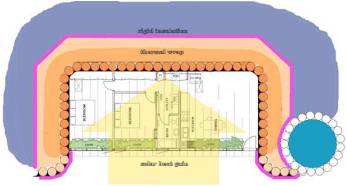
For example, windows on sun-facing walls admit lighting and heating, and the buildings are often horseshoe-shaped to maximize natural light and solar-gain during winter months.
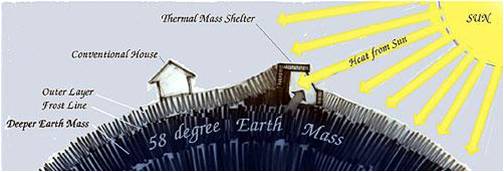
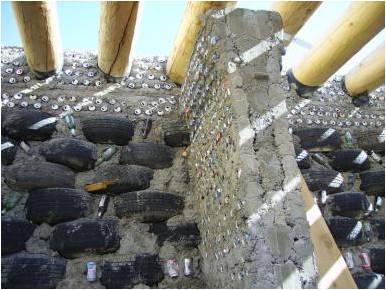
Floors must be finished with stone, tile, cement, or some other material that will further enable the concept of thermal mass construction. Interior non-structural walls use recycled bottles and cans to form their shape. They are laid like bricks to form a matrix in cement. The cans and bottles serve no structural purpose. They are simply used as a method to form concrete into walls in a low-tech way using recycled materials instead of more cement or wood. These walls can be plastered over for a clean look. Many of the bottle walls are plastered, but leave a portion of the bottles exposed to allow a stained glass effect.
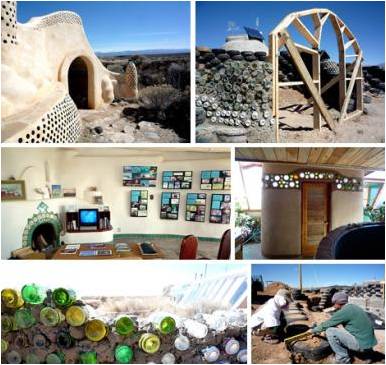
During the winter months, the low angle of the sun allows passive solar heat to be collected through the south facing windows. It is absorbed into the floors and walls throughout the day. Later in the evening when the outside air cools, the stored heat is released. During the hot summer months, the angle of the sun is too steep to reach the interior portions of the structure. This allows for a radiant cooling effect from the earth. In addition to the thermal cooling properties, passive ventilation systems assist in maintaining a comfortable temperature. Small windows are opened along the south side to allow air in Skylights are then opened to draw the fresh air up through natural convection. For extremely hot climates, a cooling tube can be added. Incoming air is channeled through a tube buried in the earth. This taps into the cool earth temperature and draws cool air into the house.
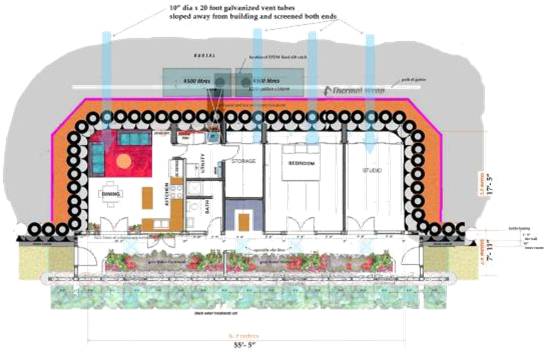
Rainwater is collected for the water supply from the roof. The water is stored in cisterns buried next to the house. The water is then pumped and pressurized from the cistern through a filtration system before it is used for drinking, bathing or cleaning. Hot water is obtained through a solar hot water heater. On-demand heaters, powered by natural gas, are used as a back-up. Once used, the grey water is collected and filtered through an indoor planter called a botanical cell.
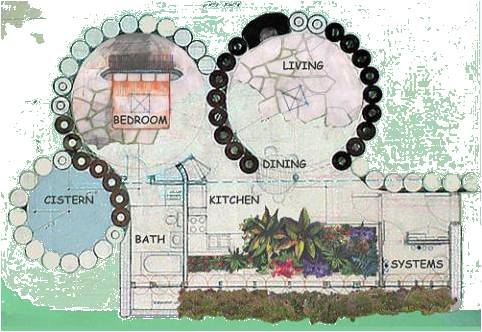
The water is used for growing various edible foods, herbs and ornamental plants. Once filtered, the grey water not used by the plants is recycled for use in flushing toilets. Black water from the toilet is treated in a septic system then passed through an intermediate botanical cell outside the home before the water reaches the septic leech field. Most often, as the landscape plants absorb most of the water, the leech field becomes unnecessary. This leech field is, however, required by building code. This system effectively uses the same water four different times.Rainwater is collected for the water supply from the roof. The water is stored in cisterns buried next to the house. The water is then pumped and pressurized from the cistern through a filtration system before it is used for drinking, bathing or cleaning.
Hot water is obtained through a solar hot water heater. On-demand heaters, powered by natural gas, are used as a back-up. Once used, the grey water is collected and filtered through an indoor planter called a botanical cell. The water is used for growing various edible foods, herbs and ornamental plants. Once filtered, the grey water not used by the plants is recycled for use in flushing toilets. Black water from the toilet is treated in a septic system then passed through an intermediate botanical cell outside the home before the water reaches the septic leech field. Most often, as the landscape plants absorb most of the water, the leech field becomes unnecessary. This leech field is, however, required by building code. This system effectively uses the same water four different times.
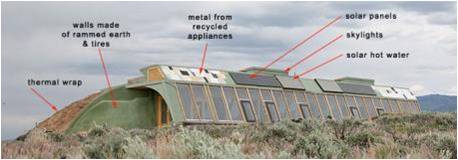
The Systems Package is the name given to all the equipment needed to run an Earthship. This includes a water organizing module for filtering collected water, a pressure tank, a grey water pump panel, batteries and a power organizing module. These components are normally packed in a small room, but easily accessible for servicing. Energy is collected by the sun via solar panels and stored in the battery system.
CONSTRUCTION MATERIAL
A sustainable home must make use of indigenous materials, those occurring naturally in the local area, For thousands and thousands of years, housing was built from found materials such as rock, earth, reeds and logs. Today, there are mountains of by-products of our civilization that are already made and delivered to all areas.
These are the natural resources of the modern humanity.
An Earthship makes use of these materials via techniques available to the common person. These materials and the techniques for using them are accessible to the common person in terms of price and skill required to use them. The less energy required to turn a found object into a usable building material the better. This concept is also called embodied-energy.
A. Rammed-Earth encased in Steel Belted Rubber:
The major structural building component of the Earthships is recycled automobile tires filled with compacted earth to form a rammed earth brick encased in steel belted rubber. This brick and the resulting bearing walls it forms is virtually indestructible.
B. Aluminum Cans and Glass/Plastic Bottles:
These little bricks’ are a great, simple way to build interior, non-structural walls. Aluminum [walls actually make very strong walls. The ‘little bricks’ create a cement-matrix that is very strong and very easy to build. Bottle can create beautiful colored walls that light shines through.
CHARACTERISTICS OF THE MATERIALS USED IN EARTHSHIPS
In keeping with the design and performance requirements of a Earthship biotecture the nature of the building materials for an Earthship must have certain established characteristics established. These characteristics must align with rather than deteriorate environment of the planet. Many conventional materials satisfy one or two of these characteristics but no conventional material satisfies all of them. Therefore, new materials or building block must be ‘invented’ or ‘created’ for the primary structure of the Earthship.
Thermal Mass: The materials that surround the spaces of an Earthship must be dense and massive in order to store the temperatures required to provide a habitable environment for humans and plants. The Earthship itself must be a ‘battery’ for storing temperature. Making buildings out of heavy dense mass is as important as making airplanes light. Obviously a heavy airplane takes more fuel to fly. Obviously a light house takes more fuel to heat and cool.
Durability: We have built out of wood for centuries. Wood is organic and biodegradable. It goes away. So we have developed various poisonous chemical products to paint on it and make it last. This, plus the fact that wood is light and porous, makes it a very unsatisfactory building materials. This is not to mention the fact that trees are our source of oxygen. For building housing that lasts without chemicals we should look around for materials that have durability as an inherent quality rather than trying to paint on durability. Wood is definitely a good materials for cabinet doors and ceilings where mass is not a factor and where it protected so it will not rot, but the basic massive structure of buildings should be a natural resource that is inherently massive and durable by its own nature.
Resilient: Earthquakes are an issue in many parts of the world. Any method of building relate to this potential threat. Since earthquakes involve a horizontal movement or shaking of the structure, this suggests a material with resilience or capacity to move this shaking. Brittle materials like concrete brake, crack and fracture. The ideal structural material for dealing with this kind of situation would have a ‘rubbery’ or resilient quality to it. This kind of material would allow movement without failure.
Low specific skill requirements: If the materials for easily obtainable housing are to be truly accessibly to the common person they must, by their very nature, be easy to learn how to assemble. The nature of the materials for building an Earthship must allow for assembling skills to be learned and mastered in a matter of hours, not year. These skills must be basic enough that specific talent is not required to learn them.
Low tech use/application: Some systems of building today are simple if one has the appropriate high-tech expensive energy dependent device or equipment. This, of course, limits the application of these methods to the professionals who have invested in the technology to enable them to use such methods. Because of the expense and energy required to get set up for these systems the common person is left totally dependent on those professionals for accessibility to these particular housing systems. Therefore the common person must go through the medium of money (bank loans, interest approvals, etc.) to gain access to a system that usually dictates performance and appearance. If high-tech systems and skills are between the common person and their ability to obtain a home, we are setting ourselves up to place the very nature of our housing in the hands of economics rather than in the hands of the people. This situation has resulted in human, energy-hog housing blocks and developments that make investors some quick money and leave the planet and the people with something that requires 3nt input-of money and energy to operate. Earthship technology is the technology of natural phenomenon like the physics of the sun, the earth and people themselves.
TYPICAL FLOOR PLANS
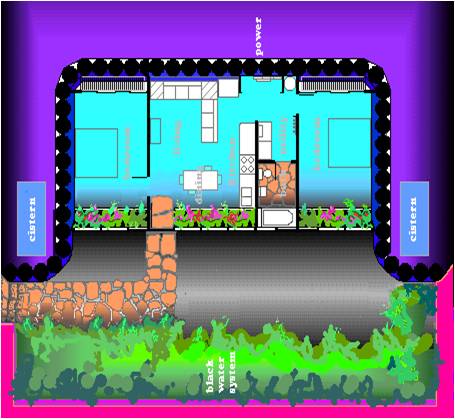
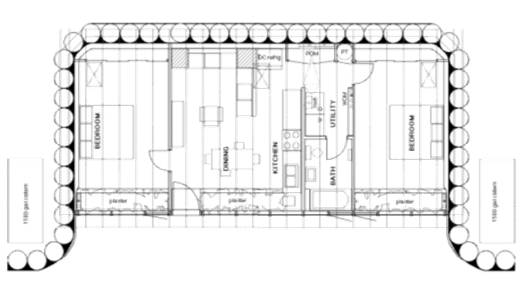
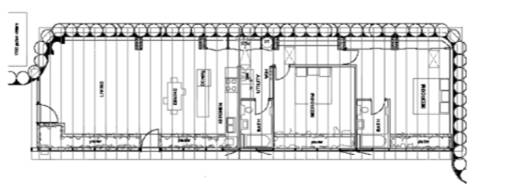
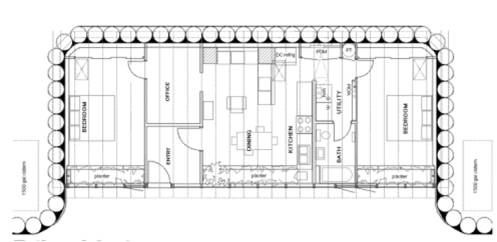
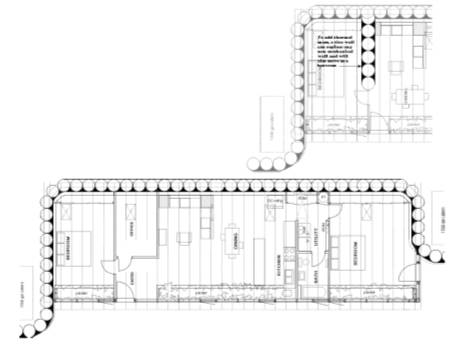
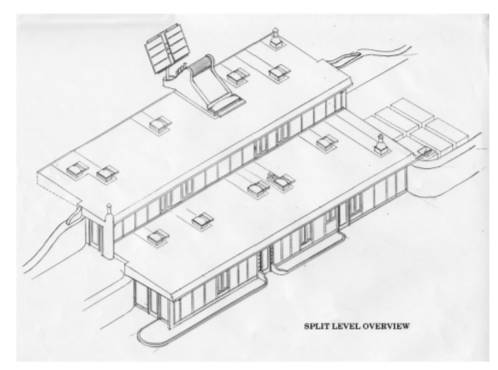
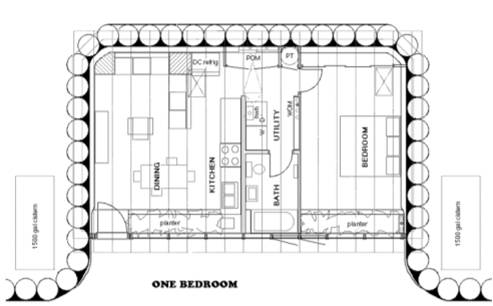
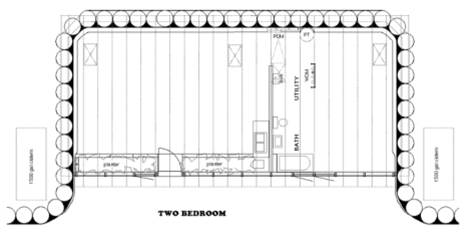
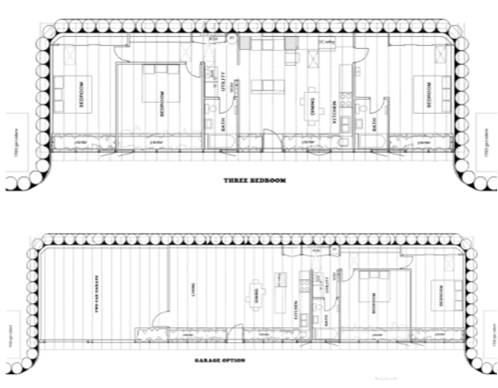
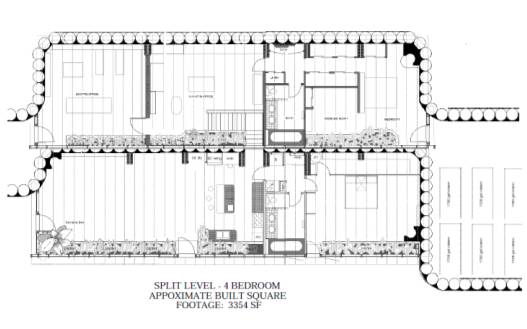
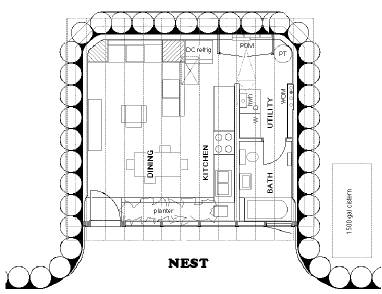
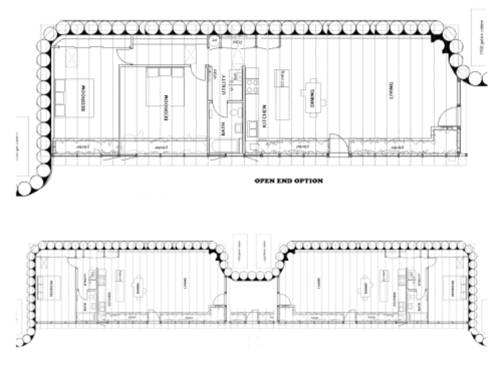
METHOD OF CONSTRUCTION
CONCLUSIONS
Potential advantages
Potential disadvantages

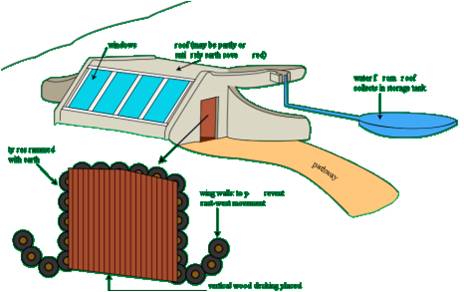
Leave a Reply
You must be logged in to post a comment.